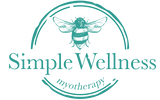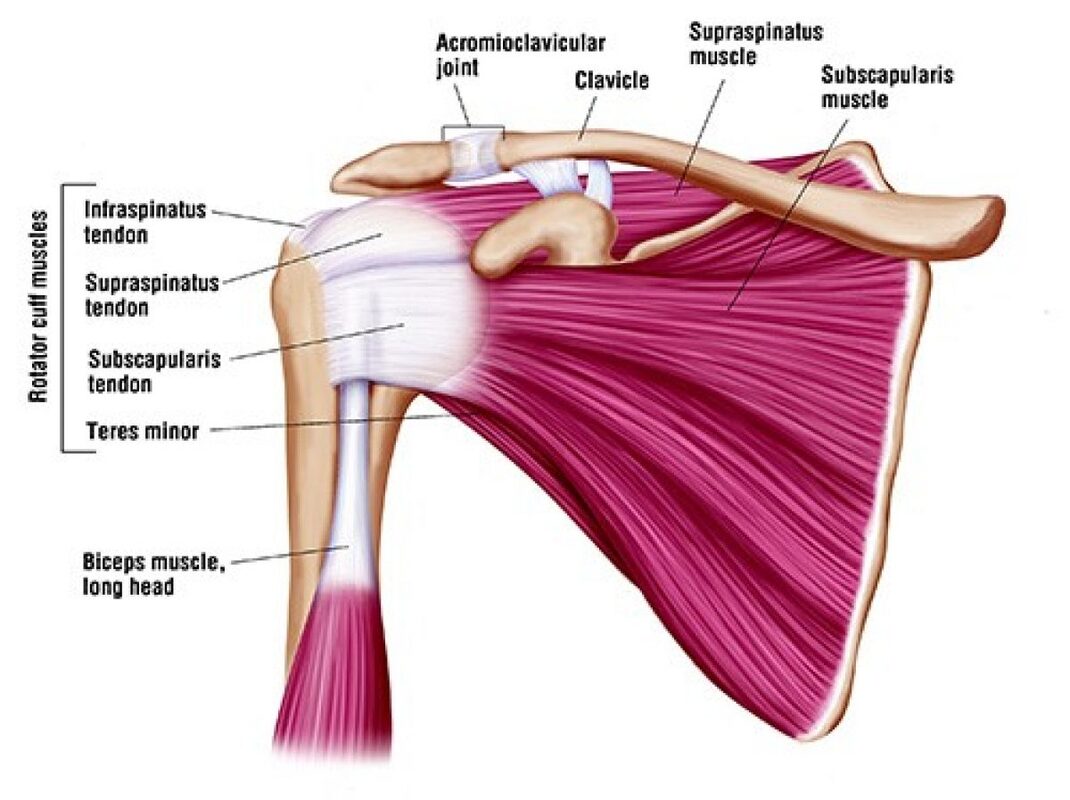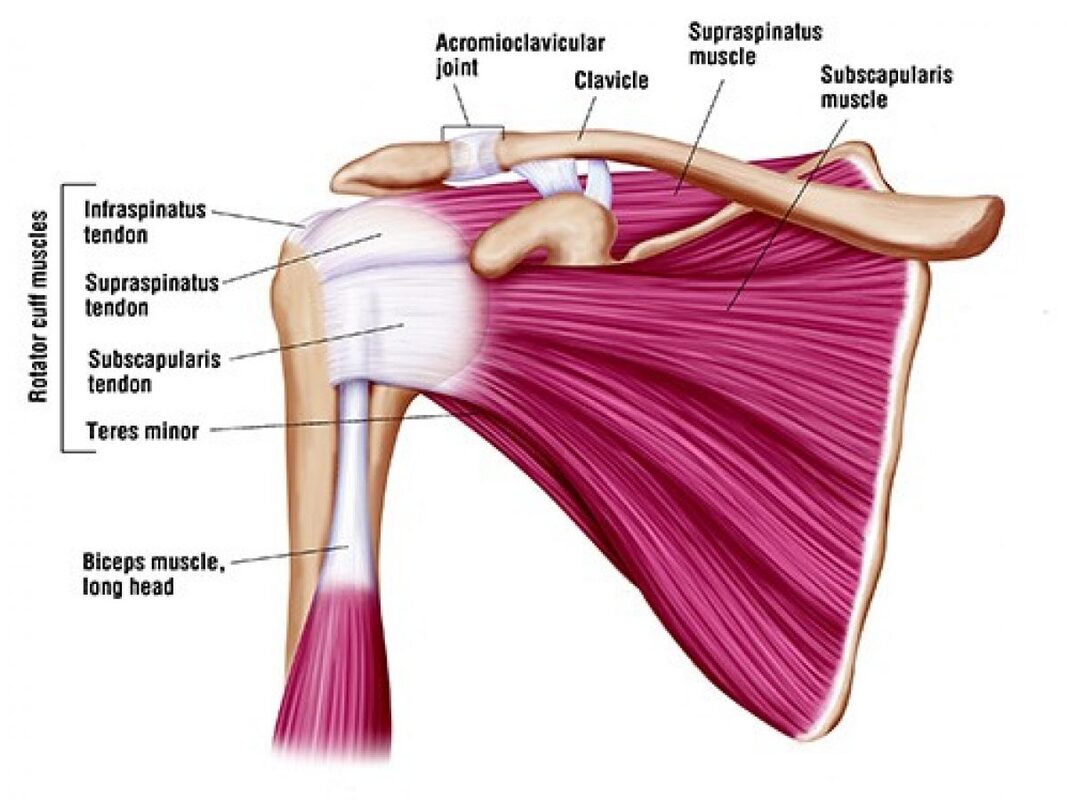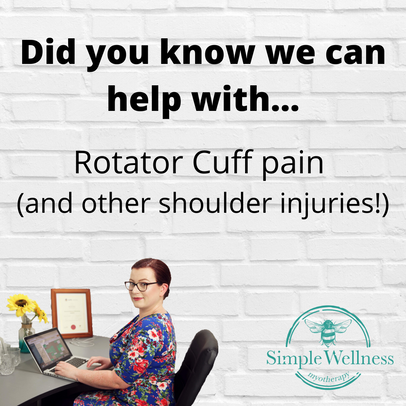|
By Duke Autret, Myotherapist In this article we will discuss Shoulder Impingement and Rotator cuff strains together since although there are distinctions they also have some overlap. In terms of the anatomy of the shoulder the rotator cuff consists of a group of 4 deep shoulder muscles which run from the shoulder blade, across the ball and socket joint of the shoulder (Glenohumeral Joint) and attach into the ball part of the upper arm bone (Humerus). This group, collectively known as the rotator cuff is indeed a ‘cuff’ that sits around the shoulder joint and which supports the muscle actions of rotating the ball in the socket at this joint, however, in reality the rotator cuff’s function is more involved with the stabilisation of the Glenohumeral joint rather than its rotation. Another muscle that we will look at here is the Biceps of your upper arm. A well known muscle for sure, its function is to show off how strong you are… and more specifically, to bend your elbow. They are actually two muscles hence ‘bi-ceps’ ('bi' indicating 'two', and 'ceps' indicating 'heads') and it’s generally the inside bicep (biceps long head) muscle which can be implicated when it comes to shoulder impingement syndromes. Image sourced from https://www.orthobethesda.com/blog/rotator-cuff-disorders-the-facts/
So what are the overlaps and distinctions of these two conditions? Generally speaking, the rotator cuff strain refers to some tearing (or micro-tearing) of the muscle/s or tendon/s and graded 1-3 depending on the severity, and is mostly the result of an trauma incident (an injury sustained while using the arm or preventing a fall etc). And since we are discussing the rotator cuff it would want to be further determined which of the 4 muscles or combination thereof is/are involved. Now ‘Shoulder Impingement’ on the other hand, can also be graded similarly however tends more to be the tendons of either the Biceps long head muscle and/or one of the rotator cuff muscles that are implicated via impingement (being pinched) between the bones of the ball of the upper arm and the shoulder blade when lifting or using the arm above shoulder or head height, and usually is a gradual onset that has to do with a change in the biomechanics (movement patterns) of the affected shoulder. When dealing with rotator cuff strains in the acute phase we will advise you on the care options and may work on the adjacent regions compensating for the injury as well and light treatment to the area itself to support its healing. Our plan in early stage care is to reduce pain and restore mobility, while also supporting the stability of the joint while the stabilising muscles are recovering. This can mean our treatment at this stage includes things like gentle manual therapy to reduce pain and inflammation, gentle mobilisation and passive movements, and taping for stability and to let those injured muscles have a chance to recover. In the later stages we apply more direct work on the specific rotator cuff muscles to ensure the minimisation of any scarring in the muscle tissues and promote the fullest possible recovery. This is where we start to see the sensitivity of your shoulder has already dropped, and we can start to provide some strengthening protocols for you to rebuild the conditioning of your shoulder. Of course, this is always going to be dependent on your unique situation, and we'll find appropriate treatment options for each stage of your recovery. Theres no one size fits all with this. The treatment plan will also vary depending if your injury is within the muscle fibres or if there is more tendon involvement, whether that be Rotator cuff tendons or Biceps. We will provide you with additional support for integrating movements and exercises to rehab them back to their functional strength. Tendons can take some time to completely recover, and need to be gradually loaded and strengthened. Personally I find working with shoulder injuries satisfying as they are one of the more complex joints in the human body with lots of movement possible but where so many different things can go awry, and I enjoy seeing them regain all that movement potential. If this has left you wondering about either of these conditions applying to you and you're looking for some help please feel free to come see me at Simple Wellness Myotherapy in Rowville. I'm available on Wednesdays, Fridays and Sundays - you can find a time with me online or just give us a call on 03 8204 0970 and we can find you a time that suits and book you in over the phone. We see plenty of people who come in and tell us "I have a rotator cuff", but we know what they mean is "My shoulder hurts, and I might have injured one of the muscles". The Rotator Cuff itself isn't the injury. Its an essential group of four muscles that stabilise and move your shoulder joint. What should you do if you've injured your Rotator Cuff muscles? The same as any other injury - book in with your favourite Myotherapists to have us assess the area so we can help you determine what type of injury you have, and follow our treatment plan to let is heal and recover. Image sourced from: https://www.orthobethesda.com/blog/rotator-cuff-disorders-the-facts/
The rotator cuff is a group of four muscles and their tendons that surround the shoulder joint. These muscles—supraspinatus, infraspinatus, teres minor, and subscapularis—work together to stabilise the shoulder and facilitate smooth movement. The tendons of the rotator cuff attach these muscles to the upper arm bone (humerus) and the shoulder blade (scapula). The primary role of the rotator cuff is to keep the shoulder joint stable, allowing for a wide range of motion. It helps to hold the ball of the humerus firmly within the shoulder socket, providing support during activities that involve lifting, reaching, throwing, and rotating the arm. Additionally, the rotator cuff aids in generating power and controlling movement in the shoulder. Common Causes of Rotator Cuff Injuries Rotator cuff injuries can occur suddenly, as a result of a traumatic event like a fall or lifting a heavy object, or develop gradually due to repetitive motions or wear and tear. Common causes include:
Protecting and Maintaining a Healthy Rotator Cuff While some rotator cuff injuries may be unavoidable, there are steps you can take to protect and maintain a healthy rotator cuff:
The rotator cuff is a crucial structure that enables the remarkable range of motion in the shoulder joint. Understanding its function and the causes of injury can help you take proactive steps to protect and maintain a healthy rotator cuff. By practicing good shoulder habits, engaging in strength training exercises, and seeking prompt treatment for any shoulder pain or discomfort, you can reduce the risk of rotator cuff injuries and preserve your shoulder's mobility for years to come. Book online with one of our myotherapists to start your treatment plan and keep your rotator cuff as happy and healthy as possible! Most people have heard of the Rotator Cuff being a big culprit of shoulder pain, but do you know what it is and how to get help? Our Myotherapists and Remedial Massage Therapists help a lot of people with Rotator Cuff pain - its one of our most commonly treated pains! The Rotator Cuff is a group of 4 muscles that all work together, and they have different actions. So when you come in with a Rotator Cuff injury, the first thing we’ll work out for you is which muscle is causing you to feel the pain.
The job of the Rotator Cuff group is to move and stabilise your shoulder, and it does that by making what I like to light heartedly call the Shoulderblade Sandwich. Imagine your shoulderblade bone (scapula) as the filling of the sandwich, and the Rotator Cuff muscles are the bread on either side. The muscles on the outer side work to lift your arm and rotate it outwards away from your body, and the inner muscles rotate your arm inwards. The most common issues we see with Rotator Cuff complaints is tight muscles referring pain, or muscle tears. Rotator Cuff referral pains can be felt locally around the shoulder, as well as further down your arm, elbow, wrist and hand. If you've got a Rotator Cuff tear or a partial Rotator Cuff tear, you'll likely notice pain and difficulty on raising or rotating your arm. Muscle tears can be identified on an ultrasound. If you’ve already had the ultrasound and been given the report that you have a tear, the next step for you is to rehabilitate that muscle, and we can help! Pain from shoulder and Rotator Cuff injuries usually respond well to hands on treatments like massage, cupping, or dry needling. We also like to help stabilise your shoulder using kinesiotaping. So how do you get help if you think you might have a Rotator Cuff problem? Firstly, book a time to come see us so we can help you find which of those 4 muscles is acting up. We’ll do some muscle testing and make a plan for reducing your pain and getting you strong again. If we think you may need an ultrasound to check for possible muscle tears, we can refer you to Dr Waj Dib here at Together Medical Family Practice in Knoxfield. Dr Dib is a fully bulk billed GP who can send you for scans if you need them. |
Meet Our Team
We have a team of great practitioners available 7 days a week at our Rowville clinic. Archives
July 2024
Categories
All
|
Got a question about Myotherapy?
Contact Mel by phone, email or Facebook
|
Simple Wellness Myotherapy & Remedial Massage Clinic
Shop 12B 150 Kelletts Rd Rowville VIC 3178 |
Phone us on
03 8204 0970 |




 RSS Feed
RSS Feed